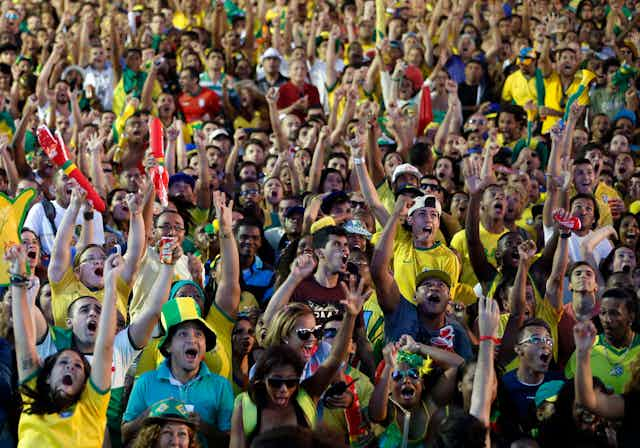Whether you like it or not, football is set to invade your workplace. With the 2018 FIFA World Cup starting on June 14, expect coffee breaks, lunches and hallway chats to be dominated by talk of the beautiful game. Not to mention the people who will keep up with the latest scores during working hours – ten games in the group stages will take place during European working hours.
But don’t fear: this does not have to be a big waste of time and resources. Yes, the time spent fussing about football may not be spent on finalising a report, advancing a project, or analysing industry trends. (Indeed, estimates suggest that employees watching the 2010 World Cup during working hours could have costed as much as US$10.4 billion in lost production time.) But there are multiple ways to make up for this by embracing the tournament.
According to Gallup’s 2017 global survey, the State of the Global Workplace, only 15% of full-time workers are truly engaged at work. Almost a quarter of employees surveyed by recruitment agency Adecco said they don’t think their employer tries to improve their happiness. And don’t expect paychecks to do the job: the best predictor of workplace satisfaction, according to the Glassdoor research group, is the culture and values of the organisation, while compensation and benefits were consistently rated among the least important factors.
The true bane of an organisation’s existence is lack of engagement and job satisfaction among its employees. The World Cup is a timely opportunity to engage workers. With an estimated audience of 3.5 billion worldwide, it is the most-watched sporting event in TV history. Beyond the excitement of the tournament, it brings people together and allows them to bond with colleagues outside their normal work tasks.
Boosting the bottom line
It can also help a company’s bottom line in the long run. Employees will be more productive because they return to their desks energised. Emotions are likely to run high during games, resulting in a more informal and relaxed environment. These environments are known to enhance employees’ intrinsic motivation – they simply want to come to work.
Committed employees perform better and are less likely to switch jobs: Gallup estimated that business units in the top quartile in terms of engagement are 17% more productive and 21% more profitable than those in the bottom quartile. There are also many studies showing that satisfied employees drive business results. Management consultants Bain & Company found that inspired employees are almost three times more productive than dissatisfied employees.

Companies may benefit from enhanced innovation since relaxed, friendly, and fun environments spur creative thinking and good ideas. This is why 72% of people report getting creative ideas in the shower.
You may see an improvement in the execution of change initiatives as a result of bringing different elements of the organisation together. A fun and pleasant work environment encourages employees to form connections beyond the people they mostly associate with, such as their specific team or age group. Football is a powerful icebreaker, allowing employees to transcend job titles and bridge silos. Alongside discussing semi-final results, employees can learn more about each other’s job functions and will, in turn, be better able to support each other, saving time and helping implement good ideas more effectively.
Three ways to get involved
We suggest three levels of boosting employee engagement through World Cup mania. The first is to encourage conversations about the event. Don’t monitor or try to stop watching games during business hours – this will just make your staff resent you. Instead, engage with what’s going on.
Second, you could organise a TV screen in the office. To see the culture benefits for your organisation, keep it in-house and don’t allow external factors to interfere with the experience.
Third, get competitive and sponsor a sweepstake on the outcome of the tournament. A real competition within the organisation will get people involved at a deeper level. Not only is making predictions fun and highly engaging, friendly competition can take place among staff, but also across departments.
Putting proceeds from the competition to charity can also increase employee engagement and sense of purpose and you might have an attractive prize to increase participation for those who are not football fanatics by default.
While encouraging football mania can be a better time investment than you thought, stay alert and remain inclusive toward those who are not natural football fans. While this article is written by two football fans who happen to be female, you may still encounter concerns that such an event is not catered towards women at the workplace. In our experience, as long as the fuss is happening everywhere and involving everyone in the fun, you are safe.
So, get cracking on those World Cup screens and create your in-house engagement. It’s a great way to effectively engage and inspire your organisation – and have fun along the way.
More evidence-based articles about football and the World Cup:


